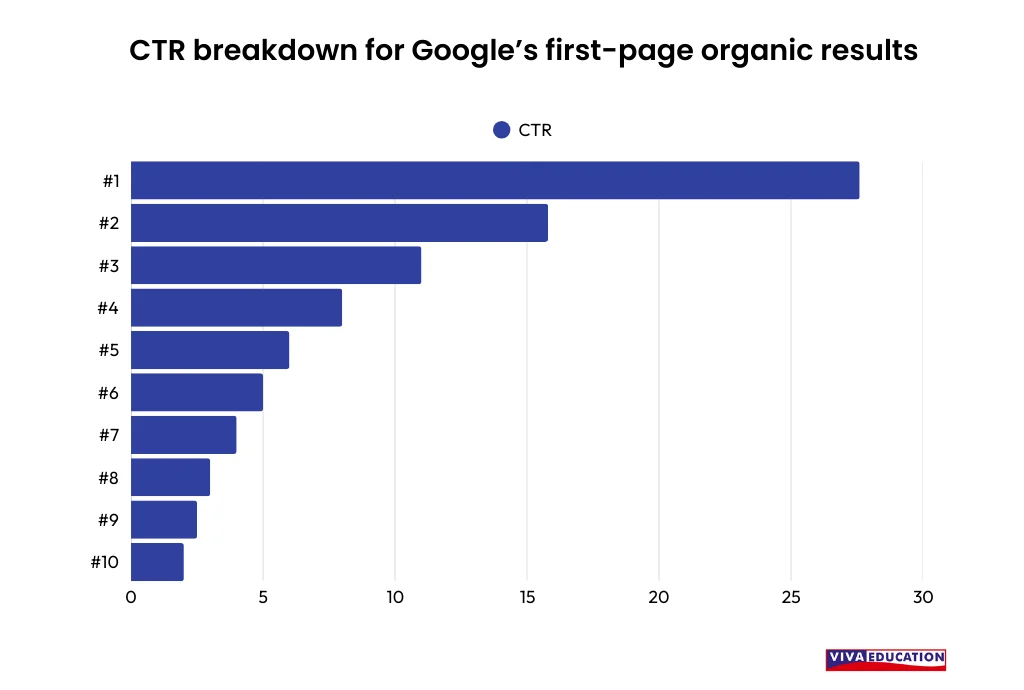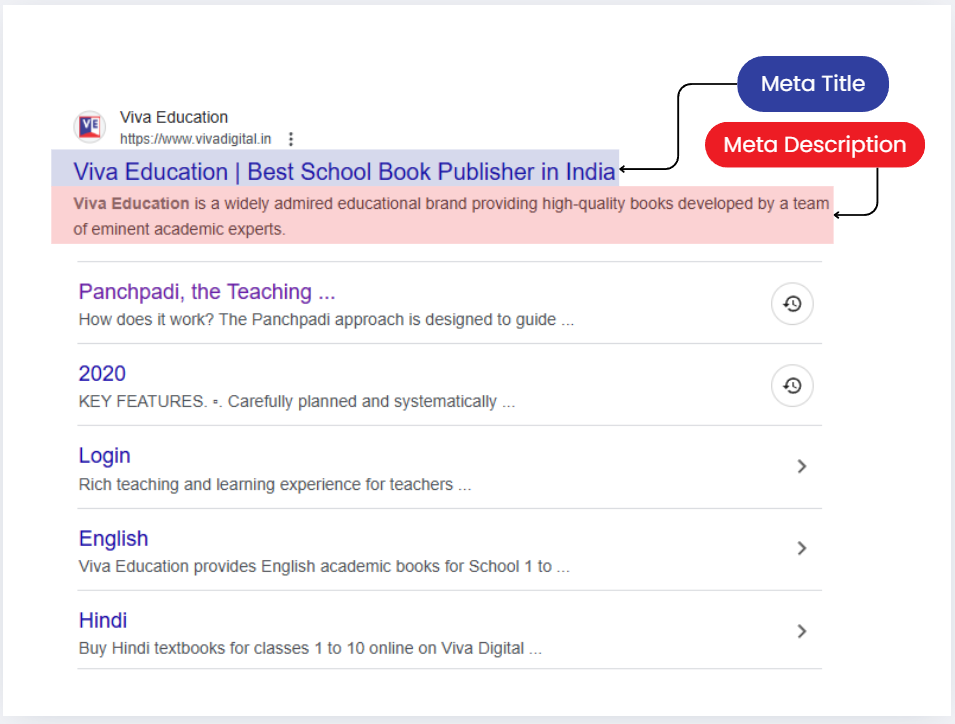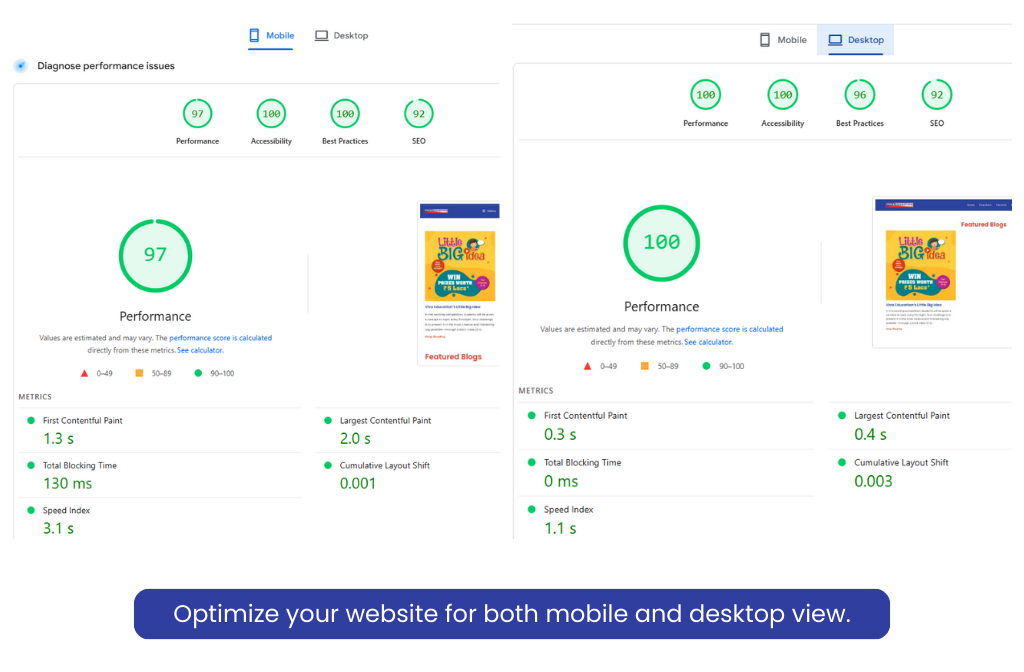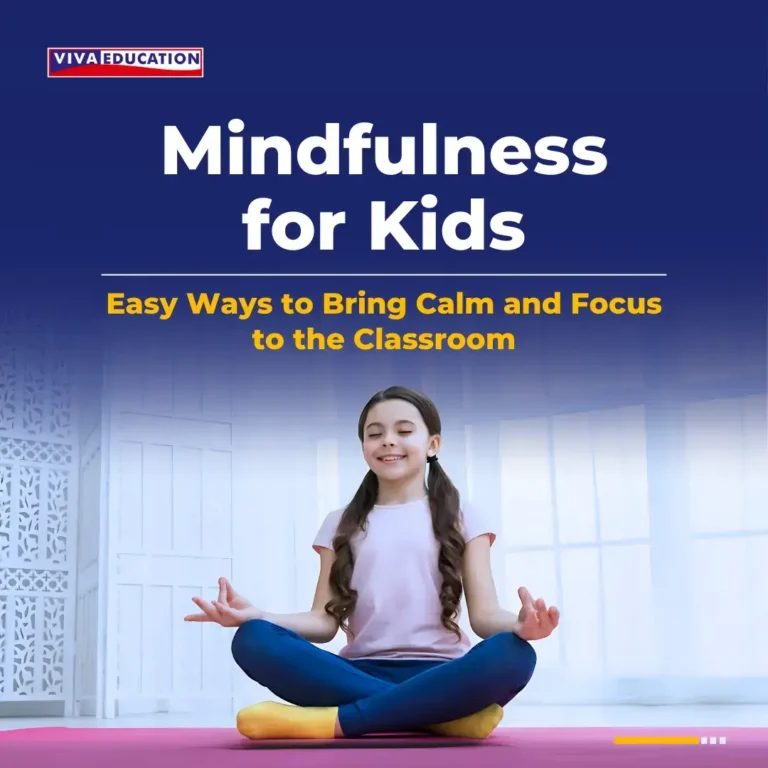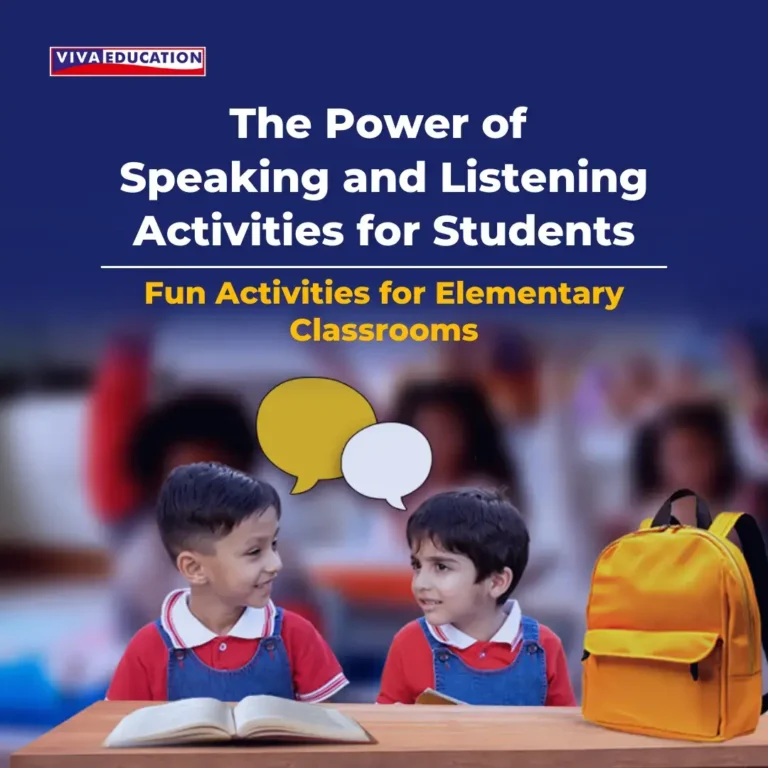Why SEO for Schools Is Essential for Success in the Digital Age
- Teachers
- May 23, 2025
- Bharat Singh

In a world where parents and students turn to Google before stepping onto campus, your school’s online visibility can make or break first impressions. You may have a stunning website, with vibrant photos, heartfelt testimonials and a clear mission, but without search engine optimization (SEO), it’s like showcasing your story in a locked room.
Today, SEO is essential in education marketing. In many cases, organic search is one of the top sources of traffic to school websites. Simply having a great site isn’t enough. You need a strategy that aligns with evolving search algorithms and user behaviours.
SEO isn’t a one-time task; it’s an ongoing effort. From optimising keywords and creating high-quality content to earning authoritative backlinks and adapting to AI-driven search, maintaining visibility online takes continuous work.
In this guide, we will share practical, up-to-date SEO strategies tailored for schools, so you can boost your visibility and connect with the families searching for what you offer.
What Does SEO Mean For Schools?
First, let us understand what SEO actually is and how it works. SEO for schools refers to the strategies that help your website rank higher on search engines, making it easier for parents and prospective students to discover your school among the available options. By enhancing your website’s content, targeting the right keywords, and ensuring a smooth user experience, these digital marketing strategies for schools improve your online presence and boost rankings on platforms like Google, Bing, Safari, etc.
This increased visibility means more visitors to your website and people actively looking for schools like yours. SEO is cost-effective compared to paid ads, as it attracts organic traffic without extra marketing costs.
How SEO Works?
SEO (Search Engine Optimization) helps improve a website’s visibility in search engine results pages (SERPs) like Google. Think of Google as a very clever librarian. When you create a website, Google’s robots (bots) visit your pages, read your content, and follow your links like reading a book. They gather this information and store it in a vast online library. So, when someone searches for “best schools nearby,” Google quickly looks through its library and shows the most relevant and useful pages first. Good SEO helps your website appear near the top, making it easier for parents and students to find and visit your site!
SEO relies on three main steps, often called the core pillars:
- Crawling – Bots scan your website to discover all the pages and content.
- Indexing – The search engine stores and organises this information in its database.
- Ranking – When someone searches, the search engine decides which websites are most useful and ranks them in order.
By focusing on these three areas, your school can ensure it appears higher in search results, making it easier for the right families to find you online.
Benefits of SEO for Schools
SEO greatly benefits your school, helping you connect with more families and grow your community.
1. Increased Online Visibility
Research indicates that over 80% of online searches begin with an unbranded term, such as “best primary school in Mumbai” or “top secondary school near me”. By targeting these keywords, your school can attract more organic traffic.
2. Increasing Click-Through Rates and Authority
Websites that rank higher in search results usually get more clicks because people tend to choose the top results first. SEO strategies like creating quality content and getting reputable backlinks helps improve your ranking, increasing the chances that parents and students will visit your school’s website when searching for options.
3. Generating Enquiries and Admissions
Effective SEO boosts your website traffic, which can lead to more enquiries, open day registrations, and student applications. By making your school easier to find online, SEO helps connect you with families actively searching for the right educational fit.
4. Enhancing Community Engagement
A well-optimised website facilitates better communication with parents, students, and the local community. Your school can build stronger relationships and keep stakeholders informed and engaged by providing valuable content, updates, and resources.
5. Cost-Effective Marketing
Compared to paid advertising, SEO provides a more sustainable and cost-effective marketing strategy. By investing in SEO, your school can achieve long-term visibility and attract prospective students without the ongoing expenses of paid campaigns. A small investment in SEO can deliver lasting results, including consistent website traffic, quality leads, and increased admissions. It’s an innovative approach that benefits your school over time, helping you connect with more parents and students without relying on paid ads
What are the Core SEO Strategies for Schools
1. On-Page SEO
On-page SEO refers to optimising individual web pages to rank higher in search engines. It includes improving content, using keywords, optimising headings, meta tags, images, and ensuring a clear site structure for a better user and bots experience.
- Keyword Integration: Identify and incorporate keywords that parents and students will likely use when searching for schools. For example, “best primary school in Mumbai” or “top secondary school near me” can be strategically placed in page titles, headings, and content. Integrate keywords naturally into titles, headings, meta descriptions, URLs, and throughout the content. Focus on readability, avoid keyword stuffing, and use variations to match user intent and improve search engine visibility.
Pro Tip: Use tools like the Semrush Keyword Magic Tool for powerful keyword research
- Meta Descriptions and Titles: Write compelling meta descriptions and titles for each page to improve click-through rates from search engine results. The meta title should be eye-catching and engaging, encouraging users to click on it.
- URL Structure: Ensure URLs are clean and descriptive, reflecting the page’s content.
Good URL example: www.xyzschool.co.uk/primary-education/maths-curriculum
Bad URL example: www.xyzschool.co.uk/page?id=12345&ref=abc
Pro Tip: Good URLs are easy to read, include relevant keywords, and give users and search engines a clear idea of the page’s topic. Bad URLs are confusing, full of random numbers or characters, and don’t describe the page content.
- Internal Linking: Link related pages within your website to guide visitors and distribute page authority.
Example:
On your “Primary Education” page, you might include a link like:
“Learn more about our Maths Curriculum”, linking to the dedicated Maths Curriculum page.
This helps visitors easily find related information and signals how your pages are connected to search engines.
Boost your Google ranking with backlinks:
- Content Quality: Develop informative and engaging content that addresses the needs and questions of prospective families.
Focusing on these elements makes your website more user-friendly and search engine-friendly, enhancing visibility and engagement.
2. Off-Page SEO
Off-page SEO involves activities outside your website that influence your search engine rankings. Key strategies include:
1. Local Citations and Profile Creation: Ensure your school’s information is accurately listed in local directories and educational platforms. This will improve your local search visibility and make it easier for families nearby to find you.
This topic will be explained in more detail later in the Advanced Techniques for a Competitive Edge.
2. High-Quality Backlinks: Earn backlinks from reputable educational blogs, news outlets, and community websites to boost your site’s authority.
To earn high-quality backlinks, create valuable, shareable content such as helpful guides, news about your school, or success stories. Reach out to local education blogs, news outlets, and community organisations to share your content or offer guest posts. Building relationships with these groups can lead to natural backlinks that boost your site’s authority and search rankings.
3. Social Media Mentions: Engage with your community on social media platforms. Shares and mentions of your website on social media can drive traffic and enhance your online presence.
4. Forum Participation and Q&A Platforms: Participate in educational forums and Q&A sites to establish your school’s expertise and provide valuable information.
Some platforms to consider include Quora, Reddit and Stack Exchange. Engaging on these sites helps raise your school’s profile and build trust with parents and students looking for the right educational fit.
5. Online PR and Guest Posting: Contribute articles to educational publications and blogs to reach a broader audience and build credibility. Consider reputable platforms like Edutopia for insights into K-12 education or Inside Higher Ed for discussions on post-secondary topics. These efforts help establish your school as a trusted and authoritative institution in the digital space.
3. Technical SEO
Technical SEO optimises a website’s backend structure to improve crawlability, indexing, and performance. Best practices include fast loading speeds, mobile-friendliness, secure HTTPS, clean URL structures, and XML sitemaps.
- Site Speed: Optimise images and code to ensure fast loading times, enhancing user experience. You can check your website’s speed insights here.
- Mobile-Friendliness: Design a responsive, mobile-first website that functions seamlessly across all devices. With most users browsing on smartphones, prioritising mobile usability is essential for both user experience and search engine rankings.
- Secure Website (HTTPS): Implement SSL certificates to secure your website, building trust with visitors.
- Structured Data (Schema Markup): Use schema markup, such as the “School” or “Organisation” schema, to help search engines understand your content and display rich snippets in search results.
Addressing these technical elements ensures that search engines can effectively crawl and index your site, improving visibility.
9 Must-Know Technical SEO Practices for 2025:
4. Local SEO
Local SEO is search engine optimization that improves a business’s online visibility for local searches, including location-specific keywords or phrases like “near me.” It helps companies appear higher in search results when people in their area are looking for their products or services.
- Google Business Profile: Claim and optimise your Google Business Profile with accurate contact information, opening hours, and photos. This helps your school appear prominently in local search results and Google Maps, making it easier for parents to find and contact you.
- Consistent NAP Information: Consistent NAP information builds trust with search engines, improving your school’s local search rankings and making it easier for families to find accurate contact details.
- Localised Content: Create content highlighting local events, partnerships and community involvement.
- Encourage Reviews: Ask satisfied parents and students to leave positive reviews, as these boost your school’s reputation and improve your local search rankings. Positive reviews signal trustworthiness to search engines and create a favourable online image that attracts more families.
- Google Posts: To engage with your community, regularly update your Google Business Profile with posts about news, events, and announcements.
These strategies increase your school’s visibility to local families searching for educational options.
Learn how to create and set up your Google Business Profile:
5. Content Marketing
Content marketing involves creating valuable content to attract and retain your target audience:
- Blog Posts: Write well-crafted articles that address common questions and concerns of parents, integrating your main keywords naturally throughout the content. Regularly updated blogs show search engines that your site is active and authoritative, increasing your chances of ranking higher and attracting more prospective families.
- Multimedia Content: Use videos, infographics, and images to make your content more engaging and shareable.
Consistently producing high-quality content positions your school as a knowledgeable and helpful resource.
Pro Tip: Encourage engagement! Ask questions in your blog posts, invite comments, or even host interactive polls related to parenting and education. User engagement signals to search engines that your content is valuable, improving SEO.
6. Social Media and SEO
While social media signals don’t directly impact search rankings, integrating your school’s digital marketing efforts across social platforms can significantly boost your reach and support your SEO goals:
Social Media Marketing (SMM) boosts your school’s online presence by promoting your website content across platforms, increasing visibility and driving traffic. Engaging with your audience through comments and messages builds trust and strengthens relationships, while an active social media presence enhances brand awareness and authority. This engagement often leads to more external link clicks as users share and visit your site, which can also contribute to improving your SEO through increased referral traffic and potential backlinks.
Integrating social media into your SEO efforts allows you to reach a broader audience and foster a strong online community.
Watch this video to learn what social media strategies will work in 2025. :
Advanced Techniques for a Competitive Edge
To give your school a strong online presence and stay ahead of the competition, it’s essential to implement some advanced yet straightforward SEO strategies. Let’s break them down:
1. Build Trustworthy Links
Think of links from other websites to yours as votes of confidence. When reputable educational sites or local news outlets link to your school’s website, it signals to search engines that your content is valuable. You can achieve this by:
- Collaborating with Educational Platforms: Partner with educational blogs or forums to share insights or success stories from your school.
- Engaging with Local Media: Share newsworthy events or achievements with local newspapers or online publications.
- Encouraging Alumni Participation: Ask alumni to mention and link to your school on their personal or professional platforms, such as LinkedIn or Facebook. This will help increase your school’s online visibility and generate valuable backlinks.
2. Monitor Your Website’s Performance
Understanding how visitors interact with your website helps in making informed improvements. Utilise tools like:
- Google Analytics: Offers insights into visitor behaviour, such as which pages they visit and how long they stay.
- Google Search Console: Helps identify any issues that might prevent your site from appearing in search results.
- Regularly reviewing this data ensures your website remains user-friendly and search engine optimised.
3. Optimise for Mobile Users
Mobile-friendliness is crucial because a significant portion of web traffic, approximately 60% of global internet users, access websites via smartphones, according to Statista. For parents and students, mobile access is often preferred for convenience, allowing them to browse schedules, check updates, or register for activities on the go. A mobile-friendly site ensures:
- Responsive Design: Your website adjusts seamlessly to different screen sizes.
- Fast Loading Times: Compress images and streamline content to reduce loading times.
- Easy Navigation: Simplify menus and buttons for touch-screen users.
A mobile-optimised site enhances user experience and ranks better in search results.
4. Enhance Voice Search Compatibility
With the rise of voice-activated assistants, optimising for voice search is essential, especially since mobile devices account for much of this usage. Here’s how to optimise:
- Use Natural Language: Incorporate conversational phrases that people might speak into their devices.
- Implement Speakable Schema Markup: Speakable schema is a type of structured data code you add to your website to highlight specific sections of your content suitable for voice playback. This helps search engines, AI assistants, and chatbots easily identify and read out relevant information to users during voice searches. Using Speakable markup, your school’s content becomes more accessible through voice-activated devices like Google Assistant and Alexa, increasing the chances of your site being featured in voice search results and improving overall visibility in AI-driven search environments.
- Answer Common Questions: Create content that addresses frequently asked questions to boost your chances of appearing in voice search results.
5. Aim for Featured Snippets
Featured snippets are concise answers displayed at the top of search results.
Example:
If a parent searches “What are the school hours at XYZ School?”, a sound featured snippet might be:
“XYZ School operates Monday to Friday, 8:30 am to 3:00 pm.”
Providing straightforward answers like this in your content can help your school appear in featured snippets, boosting visibility and clicks. To increase your chances:
- Identify Common Queries: Understand what questions parents or students might have.
- Provide Clear Answers: Offer straightforward responses, preferably in bullet points or numbered lists.
- Structure Content Effectively: Use headings and subheadings to organise information logically.
By implementing these strategies, your school can improve its online visibility and build trust with prospective families.
Related blog: What Are Featured Snippets?
Overcoming Common SEO Challenges
Schools often face challenges in improving online presence due to limited budgets, slow content approval processes, and competition from larger institutions. To overcome these obstacles, it’s essential to highlight your school’s unique strengths, such as specialised programmes or a strong community focus, which can help differentiate you. Additionally, setting clear guidelines and timelines can speed up content approvals. Using cost-effective SEO tools like Google Analytics and Ubersuggest allows you to monitor and improve your website’s performance without straining your budget.
Conclusion
SEO is a long-term investment in your school’s future. SEO ensures your school connects with the right families at the right time by improving visibility, building credibility, and increasing engagement. It’s an innovative, cost-effective way to showcase what makes your school unique and ensure you stand out in a competitive market. Start investing in SEO today and allow your school to thrive digitally.
Frequently Asked Questions:
1. What is SEO, and why should schools care about it?
SEO (Search Engine Optimization) improves your school’s website and helps it rank higher on search engines like Google. Investing in SEO is essential for schools because it helps attract more families actively searching for educational options online, increases website traffic, and ultimately boosts enrollment.
2. Why is local SEO critical for schools?
Local SEO is a key part of digital marketing for schools that helps your school appear in search results when families in your area look for nearby education options. This makes it easier for local parents to discover your school and increases the likelihood of attracting students from your community.
3. How can SEO help a school increase admissions?
Effective school SEO strategies improve your online visibility, driving more targeted visitors to your website who are actively interested in your programs. This increased traffic often leads to more enquiries, open day registrations, and ultimately a boost in student admissions.
4. Can SEO improve a school’s online reputation?
Yes. SEO involves creating quality content and gaining trustworthy backlinks. These help build your school’s credibility and trustworthiness online, positively influencing parents’ decisions.
5. How long does it take to see SEO results for schools?
SEO results typically take 3 to 6 months to become noticeable, depending on competition, website condition, and the effort put into optimization.
6. What are the key SEO strategies for schools?
Key strategies include optimising on-page content with relevant keywords, building quality backlinks, improving technical aspects like site speed and mobile-friendliness, focusing on local SEO, and creating engaging content that answers parents’ questions.
Share on:
Written By:

